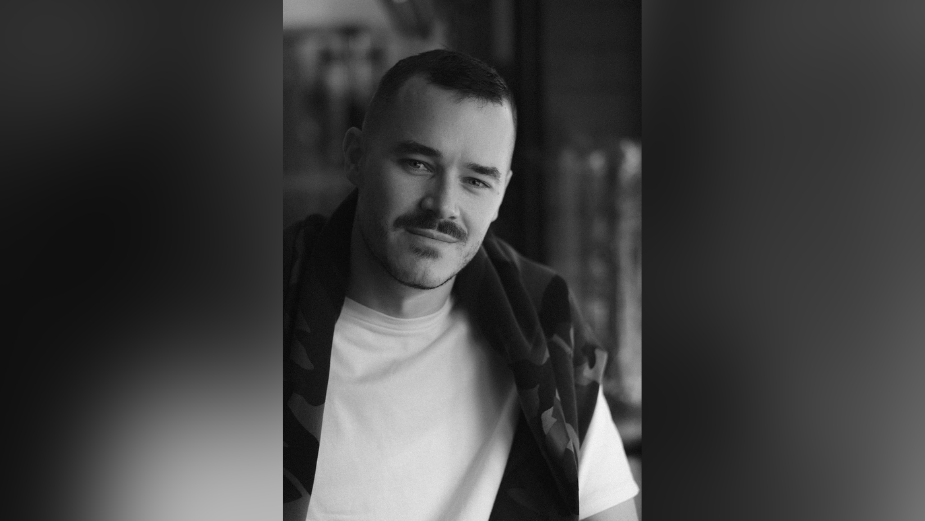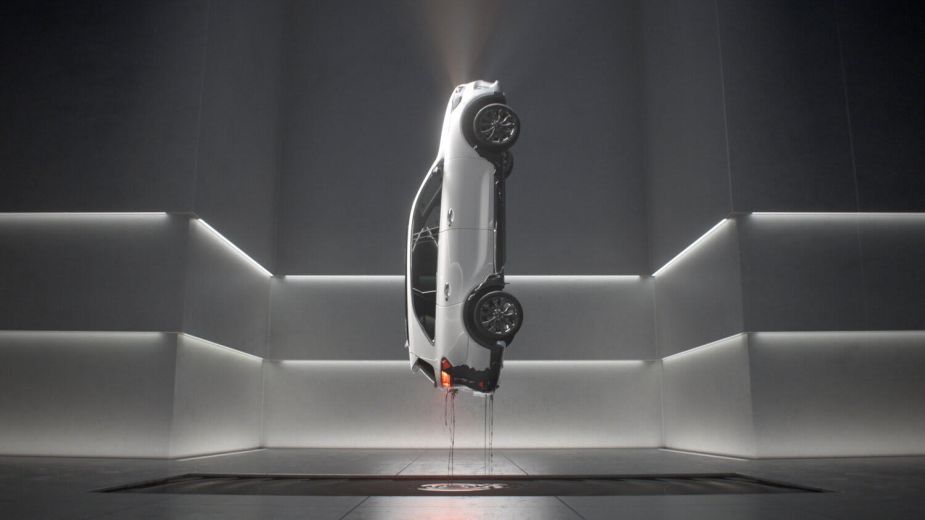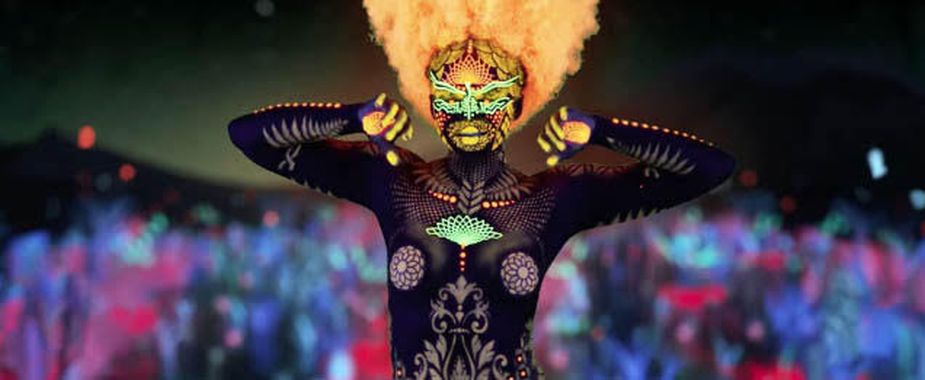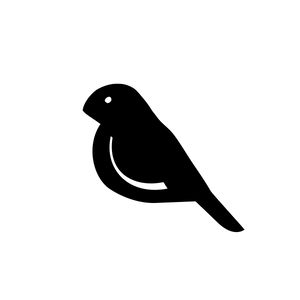
The Directors: Toby Pike

FINCH's Toby Pike is a multidisciplinary designer and director working across commercial, music and installation projects.
Through his award-winning career Toby has developed a truly unique, hyper-real aesthetic that merges film, technology, lighting, motion design and visual effects in a way that feels very human and emotionally engaging.
Toby has been fortunate to work alongside some of Australia’s top music talent such as Flume, Chet Faker (Nick Murphy), Pnau, Flight Facilities, and Rufus. Internationally, he has worked with Brian Eno, Karl Hyde & Warp Records. Commercially, he has worked with such brands as Nike, Coke, Tiger Beer, Qantas, Disney, Star Wars, Pepsico, Google, HP, Lexus and The New York Art Directors Club.
He has received accolades at D&AD, AWARD, London International Awards, Spikes Asia, Clios, Cannes, The ARIAs, FlickerFest, Vimeo Staff Picks. He has spoken at produced public works for Semi-Permanent, Sydney Festival, Electronic Music Conference, Ableton Live School, Maritime Museum, and the Apple Store.
Name: Toby Pike
Location: Sydney Australia
Represented by/in: FINCH Australia/NZ
Awards:
2019 One Show - Gold - Velocity Earnbassadors.
2019 AWARD - Bronze Pencil - PNAU “Changa Tour”.
2019 AWARD - Bronze Pencil - MONA “The Eye”.
2018 ARIAS Nomination - Music Video of the Year - PNAU Go Bang!
2018 Clipped Music Video Festival - PNAU Go Bang!
2018 Sydney FlickerFest - Stephen Dupont, A Restless Peace.
2017 Electronic Music Awards - Winner Best Live Act - Rufus Du Sol.
2015 Spikes Asia - Silver – Australian Cancer Research Foundation - ‘the One’
2015 Cannes - Finalist – Australian Cancer Research Foundation - ‘the One’.
2014 ARIAS Nomination - Music Video of the Year - Chet Faker ‘Talk Is Cheap’.
2013 ARIAS Nomination - Best Live Act - Flume.
LBB> What elements of a script sets one apart from the other and what sort of scripts get you excited to shoot them?
Toby> I’m a designer turned director. So, if it’s a brief that really allows me to since my teeth into a unique visual space, then you’ve immediately sparked my interest.
My work is diverse, and I really love jumping in the deep on new styles of work. What I’ve really been pushing for in my work is getting out of the dark lit studios and out into the real world, but then combining my hyperreal aesthetic to the natural environment.
I love VFX and animation, but there is something so much more engaging when we see this combined in nature.

LBB> How do you approach creating a treatment for a spot?
Toby> Research. First and foremost. I usually spend a good day or so digging through other work, be it commercial, film or design. Even if the right idea or approach is written clearly on the wall, I still think it’s best to explore the brief and see if there is anything that could make the brief more interesting.
I’m lucky to have a great team of creative developers that I work with and I’m finding it more and more valuable to have a brainstorming session before we jump into the treatment. I’m the kind of person that can get stuck in my own head and I can go around in circles, so I’m finding the team's creative jam sessions can snap me out of that insular head space.
The longer I do this job, the more I realise that it’s teamwork from start to finish. Yes, the director holds a lot of the decision making, but really ideas can come from anywhere and trusting the team you have around you is hugely important.
LBB> If the script is for a brand that you're not familiar with/ don’t have a big affinity with or a market you're new to, how important is it for you to do research and understand that strategic and contextual side of the ad? If it’s important to you, how do you do it?
Toby> It’s definitely a good idea to have an understanding as to where the client sits from a strategic point of view. Those strategic nuances tend to be the fussy points of the project so it’s best to really hit them correctly.
For me, this side of the project really comes down to the relationship with the creative agency. They’ve had months and months of discussions and creative history with the client, whereas the director/production team is coming in right at the pointy end of the project. So we need to have a strong rapport with the creative team and be very much strategically aligned otherwise there’s potential for hiccups along the way.

LBB> For you, what is the most important working relationship for a director to have with another person in making an ad? And why?
Toby> From a start to finish relationship, i’d say it would definitely be the creative agency team. We really need to have a good trust relationship and be in constant communication to understand the brief from strategy, concept through to execution. We’re bringing their idea to life, so the agency is really handing over the reins in many ways.
I’m not the kind of director that puffs up their chest and pretends it’s their project. I’m really adaptable and like to have the creatives involved throughout, even on shoot day. It makes for a more enjoyable and collaborative process.
LBB> What type of work are you most passionate about - is there a particular genre or subject matter or style you are most drawn to?
Toby> I’ve always loved doing a lot of different mediums of work. I started my career in design and VFX, then somehow ended up in lighting and installation design, even stage visuals for musicians.
For a while there I was concerned that I had spread myself too thin and had lost a solid identity, you know the whole ‘jack of all trades’ thing. But it wasn’t until I redid my website recently that I got a good holistic view of my body of work and I saw a lot of visual and tonal consistencies. It made me feel far more comfortable about being a diverse director.
To answer the question, I’ll sink my teeth into any genre as long as I feel that I can really make it in my own style. My work is very stylised and often hyperreal. I love pushing the aesthetic as far as I can for the brief.
LBB> What misconception about you or your work do you most often encounter and why is it wrong?
Toby> Possibly that my reel is too broad and because of that my identity is a little diluted.
For me, I think that broad spectrum of work is what makes my folio really stand out. I used to separate my project and installation work from my film work, but now I put it all together. I see a solid visual synergy across my folio and to me, that makes me a more interesting director.
The reason I love directing so much is that it really involves a huge spectrum of creative knowledge and visual storytelling. It brings in set design, lighting design, animation, photography, writing, performance, music, sound design and so on. So, the fact that I can draw on my years of running my own design studio and then apply that to filmmaking, makes me feel like I have a very relevant and rounded set of skills.
LBB> Have you ever worked with a cost consultant and if so, how have your experiences been?
Toby> Not directly. But they have been on a few of my projects. My work usually involves quite a bit of post and vfx, so I’m sure I’ve felt the effect of the cost controller when our producer tells me I can’t have that elaborate vfx shot ha!
LBB> What’s the craziest problem you’ve come across in the course of a production – and how did you solve it?
Toby> Shooting an illuminated nighttime forest concept during the day.
This was a curveball that was thrown at us late in pre-production. Our intention was to shoot at night, but there was a technical requirement that meant we needed to capture full detail and definition in all areas of the image, so no solid areas of black.
It’s impossible to use lights during the day on a wide shot as you’re fighting the sun, so this was a huge stitch up.
Normally we would say, we would shoot a plate in the day, then the illuminated element at night and combine them in post. But to make it more difficult, we were shooting with two drones. One for the camera, the second for a light source. So that meant no locked off cameras and no repeatable camera passes.
The only way we could solve this, was to shoot through twilight until we found a sweet spot where the sun was low enough that we could see our lights, but not so low that we lost detail.
We managed to get the shot, but inevitably, we had to work some post magic to really make the shot work. It was an unforeseen hurdle that meant a lot more work than we had anticipated.
LBB> How do you strike the balance between being open/collaborative with the agency and brand client while also protecting the idea?
Toby> It’s all about communication. If all parties are aligned, then it’s smooth sailing and the way it should be.
I’ve experienced a job where the agency and client were completely misaligned, and I was stuck in the middle not knowing who to listen to. I understood what the client wanted, but also didn’t want to go against the agency and put tension on that relationship. It was an extremely hard project to manage for that reason.
That’s one thing that you possibly don’t get taught in film school. The political side of the project management. Yes, you will have an EP that will back you, but when the client/agency starts looking for creative solutions, it’s on you and you really need to pick your words and be sure of yourself.
LBB> What are your thoughts on opening up the production world to a more diverse pool of talent? Are you open to mentoring and apprenticeships on set?
Toby> Love it. I think our job requires a far broader set of skills than it has in the past and directing is one of those jobs that you can really approach from many angles.
I really love mentoring, through having my own design studio we took on several young talents and worked with them building their skillset. It’s really rewarding, and I also gain a lot from another perspective.
When I’m on set, I’m really focussed and zoned in. It’s the culmination of weeks of planning ‘so better not mess it up!’ ha! So, I’d have a hard time mentoring on set, I think they would need to fall more into the production team for the shoot rather than rely on me for guidance.
LBB> How do you feel the pandemic is going to influence the way you work into the longer term? Have you picked up new habits that you feel will stick around for a long time?
Toby> I don’t think the pandemic has left anyone feeling 100% secure about their role. It’s been a tricky year. We made it work, somehow, but it's been weird for sure.
The nature of directing is that we’re constantly pitching on work without any real secret recipe for success. It's not the most secure job to begin with, it’s highly competitive, then throw a pandemic at it and yeah you very quickly start looking for other avenues of security.
I love this job and there is a dark side of me that kind of likes the struggle. But it’s foolish not to consider a side hustle outside of filmmaking. That could be anything, write a feature, make resin cast furniture, produce music, dabble in art, f*ck it; why not invest in crypto?
LBB> Your work is now presented in so many different formats - to what extent do you keep each in mind while you're working (and, equally, to what degree is it possible to do so)?
Toby> I’m assuming this question is referring to social, online tvc etc.
Personally, I don’t think a great TVC necessarily makes a great social video. They’re two very different mediums and it’s so hard to one film that services both well. It’s much more than just a square or vertical crop.
In my opinion, doing social well requires a very different edit, a much more immediate punchy piece. Purely visual and up front. The nature of viewing is nestled in amongst a fast-scrolling environment and let’s face it, social advertising is invading an individual’s personal curated space.
It’s frustrating that social still feels like it’s tagged on to the TVC and often gets under thought and underfunded. I’d love to have the opportunity to has a second round of takes that a punchier and to the point, then we can create a second edit using that.
If it must work for both, it’s more of a framing composition. Shooting a little wider and on a camera that has high enough resolution to allow for all the crops.
LBB> What’s your relationship with new technology and, if at all, how do you incorporate future-facing tech into your work?
Toby> I’d love to do more of it. Gaming direction would be a lot of fun. I’ve pitched on a few 360 films and it feels more like directing for the stage as you can’t control the viewer’s eyeline. You need to create an environment that persuades the viewer to look where you want them to. That could be lighting, sound, performance etc. It’s a different beast in many ways.
I’ve also worked on several interactive installations over the years. I love creating immersive experiences and surreal spaces of wonder. This carries over between film and installation.
For me, the consistency in my work comes from the emotive take away more so than the medium. Be it film or installation, I get far more caught up in the feeling a project gives you and that motivates my direction. A director needs to surround themselves with talented people that know how to bring these emotive notes to life, this can be applied to almost any medium.
LBB> Which pieces of work do you feel really show off what you do best – and why?
PNAU: Go Bang
A total visual explosion. This was a no holding back, 150% psychedelic feast.
AUDI: Dream a Little Dream
I know this is essentially a retail spot, but for me, it was the perfect combination of all my loves. A hand-built lighting structure, which I designed myself. An edgy and percussive edit cut to a great remixed track. Sexy cars and a beautiful set of lenses.
SONY BRAVIA XR:
One of the most technically challenging jobs I’ve done from a VFX point of view. This was a pure craft job and with a highly meticulous client.

CHET FAKER: Talk is Cheap
This is quite a few years old now, but it’s still one of my favourites. Conceptually I’ve always loved this idea, seeing the life and death of an artist and the revolving seasons shift around him. Then the craft of literally learning how to do stop-motion animation for this one project.













